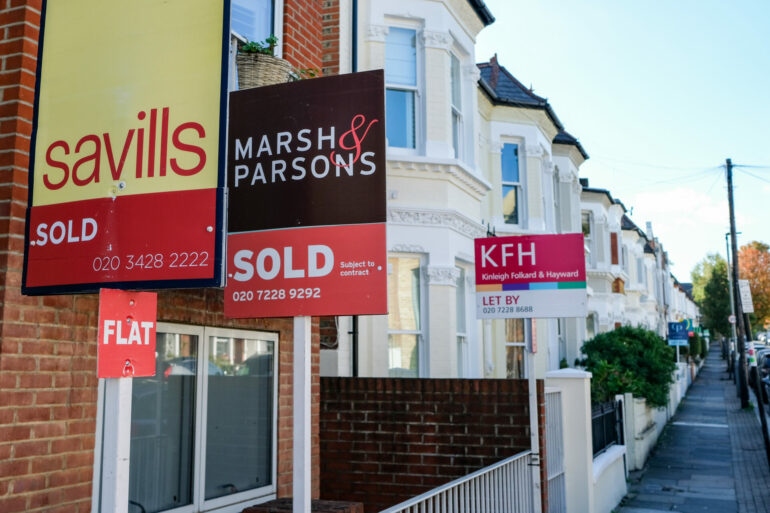Prime London sales activity picked up strongly in March, as deals and new instructions both climbed, LonRes data has revealed.
Research found that new sales instructions were 14.6% higher last year and were 29.8% higher than the March average before the pandemic.
Stock for sale also increased, standing 9.1% higher than a year ago and 36.0% more than in March 2020.
Despite the jump in transactions, average sold prices dropped by 2.7% annually in March, and were 3.6% below pre-pandemic figures.
The number of properties sold was up 29.9% on the year, and 32.4% above the 2017 to 2019 March average.
Under offer numbers also improved, rising 6.9% annually and 17.3% against the pre-pandemic average.
The data also found that sales of homes priced at £5m or more were down 17.1% compared to last year, though new listings at this price point jumped by 61.8%.
Stock for sale in this bracket climbed 22.2% over the past year.
Annual rent growth stood at 4.9% in March, with average rents across prime London still 33.3% higher than the 2017 to 2019 average.
Additionally, LonRes reported a 34.2% drop in lets agreed for March, and new rental instructions fell 23.5%.
The number of rental properties available dropped by 16.0% compared to a year earlier.
Nick Gregori, head of research at LonRes, said: “Across prime London sales activity looked much more positive in March, with transactions growing strongly compared to the same month last year.
“After February’s surprise house price rise, average achieved values fell again on an annual basis, suggesting perhaps that increasingly realistic pricing may have been the key to unlocking more demand.
“After many months where the flow of under offers into exchanges has not been smooth, this pick up in deals going through is a welcome result for buyers, sellers and agents.”
Gregori added: “As always with a single good month or even quarter, it will take longer to know if this is a sustainable increase in activity or a temporary one.
“There is an argument in favour of the latter given that the ending of the stamp duty holiday on 31 March is likely to have created pressure to conclude deals and secure a tax saving, however small. From April we may see a return to less decisive buying activity without this incentive.
“The top end of the market did not see the same kind of improvement.
“At £5m+ the relative scale of the potential tax saving is much smaller so the change to SDLT is likely to have had a minimal impact.”
He said: “With so much political and economic uncertainty around, demand is likely to remain subdued as potential buyers revisit the now well-worn phrase ‘wait and see’.
“The outlook for mortgage rates is often a key consideration for buyers, but the extent of expected rate cuts this year are now subject to growing and unpredictable external risks.
“Economists are forecasting higher chances of recession in many countries as a consequence of the stop-start trade war initiated in the US.
“Struggling economies both at home and from countries which international buyers are drawn are unlikely to be a good thing for the prime London market.”
He added: “Unlike the volatility seen in the sales market, prime London lettings has been consistent so far in 2025.
“Low levels of new instructions are limiting activity, with the usual caveat that many deals are taking place without the properties being marketed.
“Annual rental growth was 4.9% in March, with our inner prime catchment recording the largest rise this year.”




